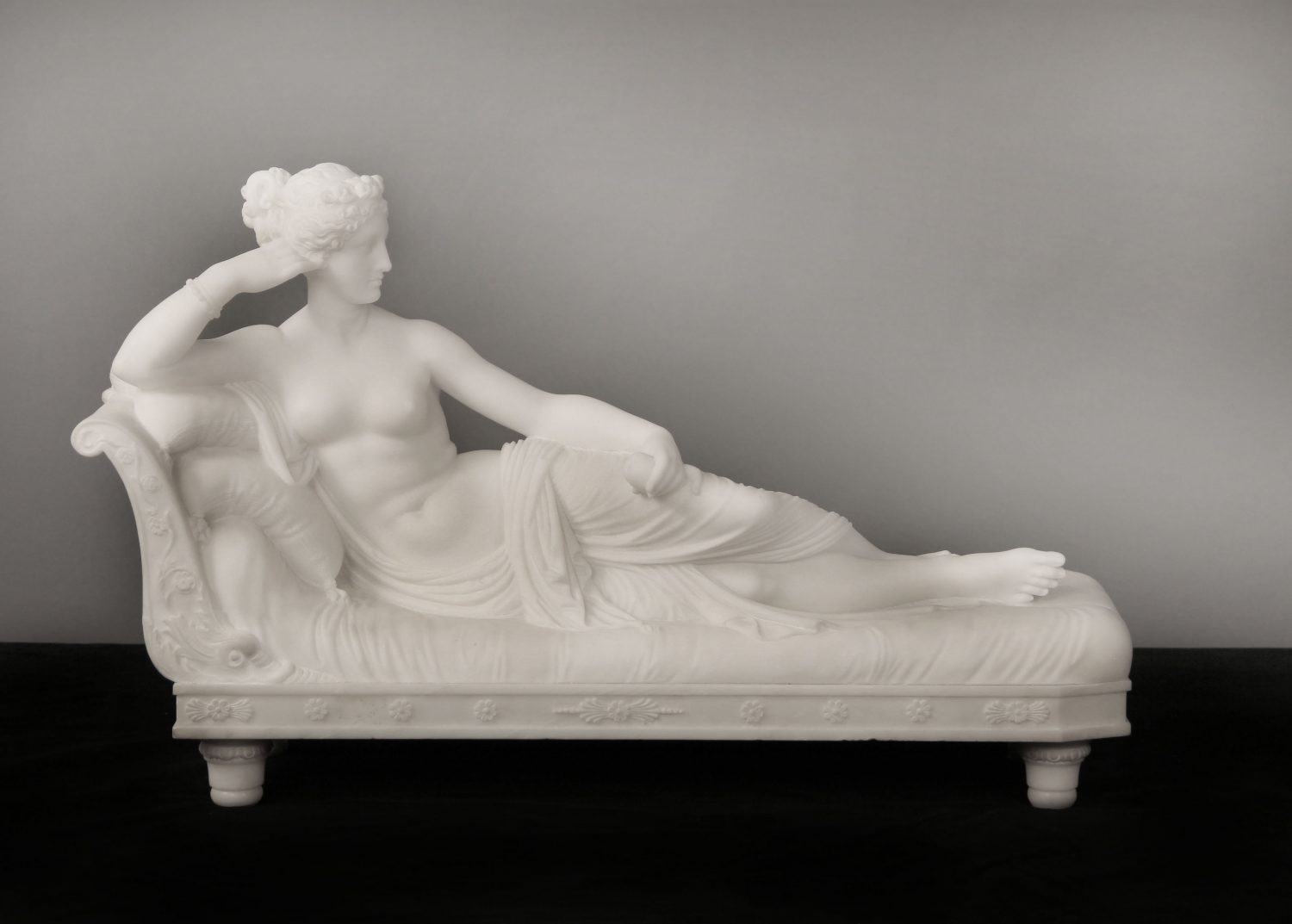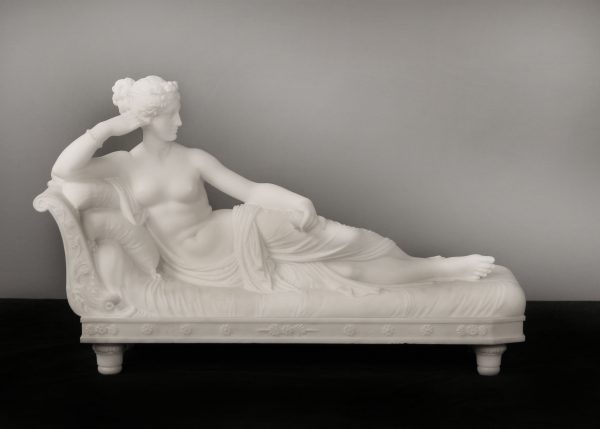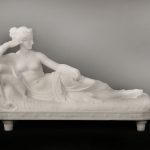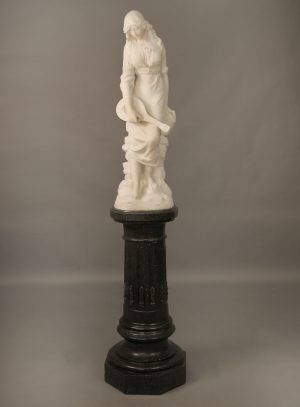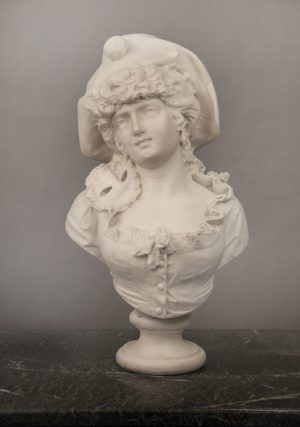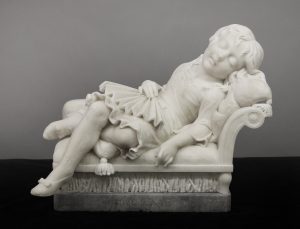Fantastic Early 20th Century Italian White Carrara Marble of a Nude Woman Reclining Prof Romanelli
Item # FK1
Fantastic Early 20th Century Italian White Carrara Marble of a Nude Woman Reclining
After Prof Romanelli
Depicting Paolina Borghese (Napoleon's Sister) as Venus Victrix, after the very famous model by Antonio Canova.
Inscribed "Under direction prof Romanelli Florence".
Pauline Bonaparte as Venus Victrix (or Venus Victorious) is a semi-nude life-size reclining neo-Classical portrait sculpture by the Italian sculptor Antonio Canova. Reviving the ancient Roman artistic traditions of portrayals of mortal individuals in the guise of the gods, and of the beautiful female form reclining on a couch (as most often seen in reclining portrayals of Hermaphroditi), it was commissioned by Pauline Bonaparte's husband Camillo Borghese and executed in Rome from 1805 to 1808, after the subject's marriage into the Borghese family. It then moved to Camillo's house in Turin, then to Genoa, only arriving in its present home (the Galleria Borghese in Rome) around 1838.
The Florentine sculptor Pasquale Romanelli achieved an international reputation for his finely carved mythological and biblical marble figures. Romanelli began his training at the Accademia di Belle Arti in Florence under Luigi Pampaloni but was soon taught by the foremost Tuscan neoclassical sculptor, Lorenzo Bartolini. Remaining in Bartolini’s favour, he went on to become his collaborator and, upon the master’s death in 1850, the successor of his studio. Romanelli’s mythological and allegorical compositions were highly prized by a cosmopolitan clientele, and he exhibited select models in Paris. One such work, La Delusa, which he presented in 1851, was acquired by the Hermitage Museum in Saint Petersburg. In addition to collectors’ marbles, Romanelli executed numerous important commissions for monuments, such as those to Vittorio Fossombroni in Arezzo, Masi in Pavia, and Demidoff in Florence. Romanelli’s final tribute to his master, Bartolini’s tomb monument, is housed in the Church of Santa Croce in Florence. After Romanelli’s death in 1887, his son Raffaello and grandson Romano continued his legacy which lives on to the present day; the Romanelli studio, now a private museum, remains a rare survival in Florence.
Details:
Height – 17 inches / 43cm
Width – 28.5 inches / 72cm
Depth – 9 inches / 23cm
Maker – After Pasquale Romanelli

